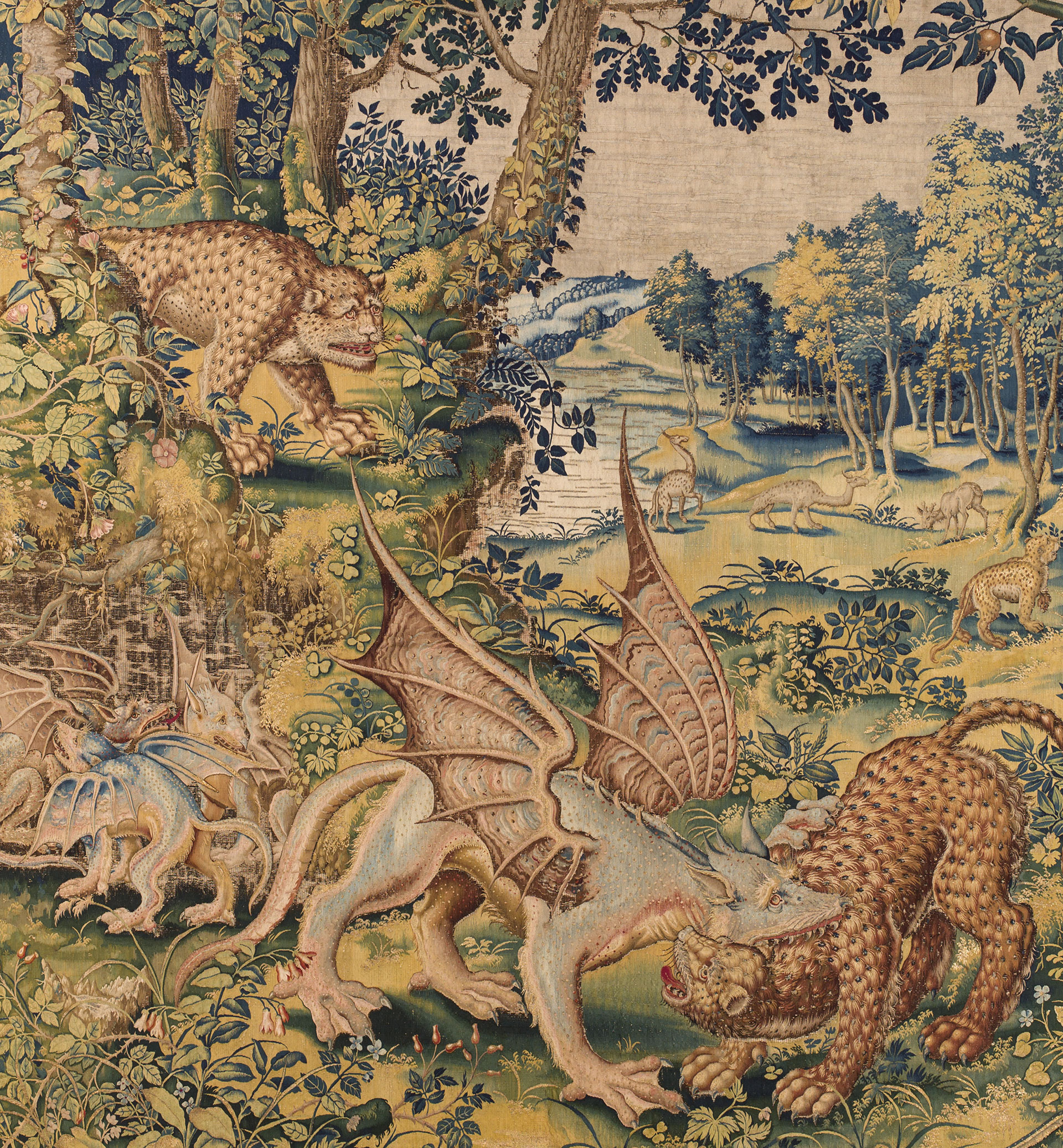Dragon Fighting against Panther, Jagiellonian tapestry
Moving to our animal-like state – when we suffer like animals, when we howl like animals, I’d like to remind us of non-human emotions, of emotions beyond the human species. In The Anatomy of Melancholy, Robert Burton wrote about human sadness. In contrast, bestiaries, those treatises on various kinds of animals, include one anonymous physiologist writing about “the physiology of sadness”. Such sadness is experienced by animals that, as in Jorge Luis Borges’ Celestial Emporium of Benevolent Knowledge (a Chinese encyclopaedia he invents in one essay), can be classified as: (a) belonging to the emperor; (b) embalmed; (c) domesticated / trained; (d) suckling pigs; (e) mermaids; (f) fictional ones, etc. Real and imaginary animals are the core protagonists of the tapestry it presents. Closest to us are two animal antagonists, the dragon and the panther. They don’t seem satisfied with their preordained symbolic significance: the dragon-Satan is grappling with the panther-Christ. A mythical creature versus a physical animal. But it isn’t their suffering that attracts our attention. What dares disturb us, oozing sadness in the background? What’s come to a halt in the upper left corner? Yes, right there. The sadness of the panther.

